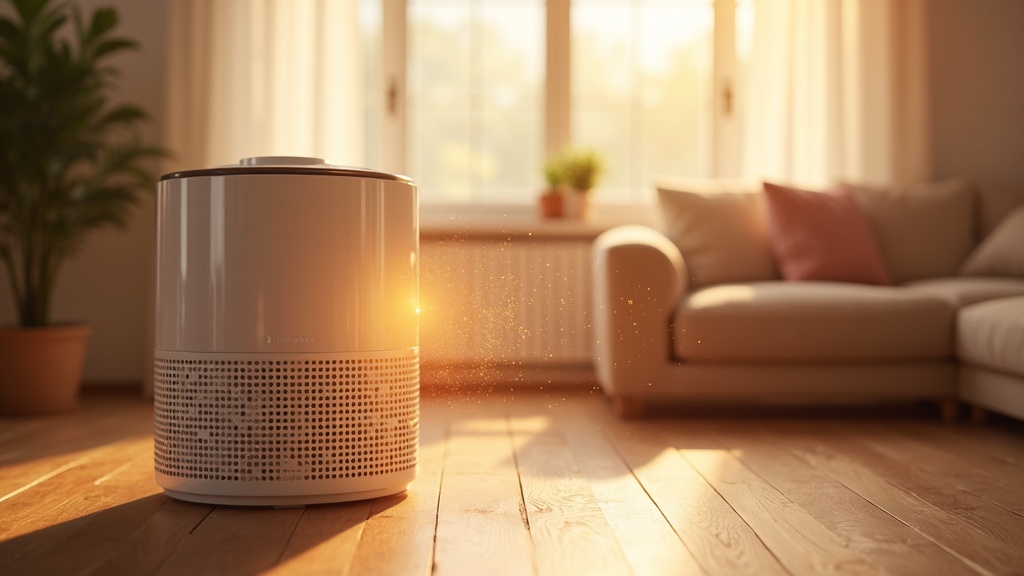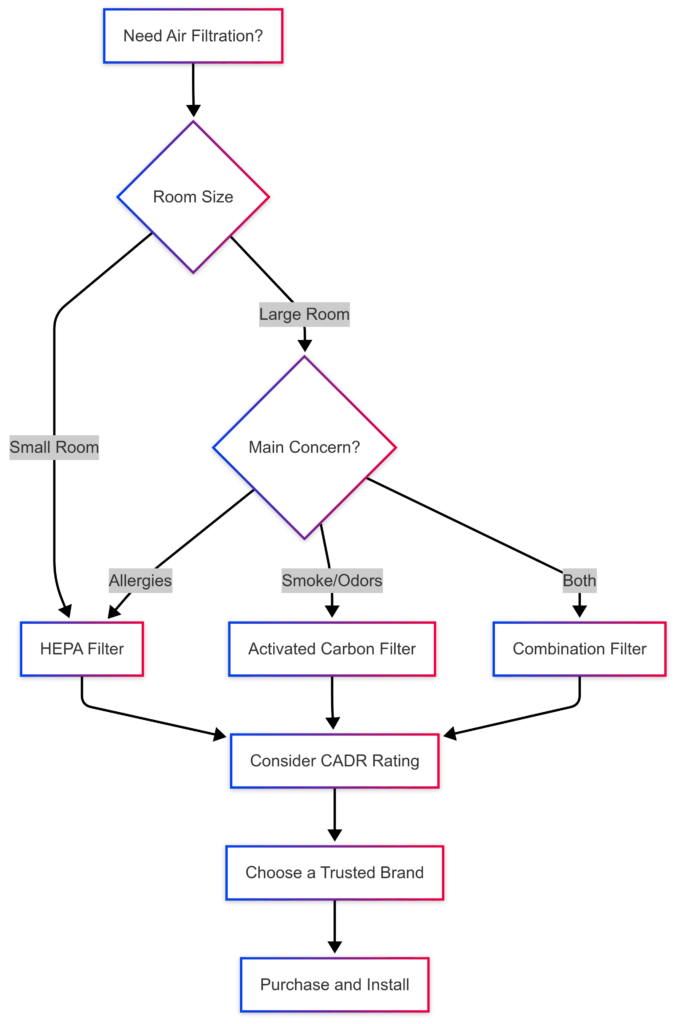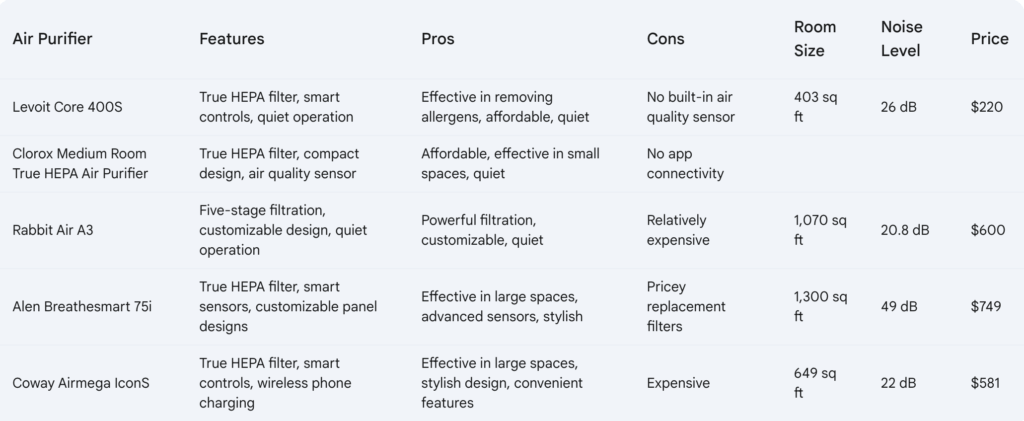Living with bad air indoors used to mean just opening a window for fresh air, but that’s not always enough anymore. With wildfire smoke, urban pollution, or allergy-triggering particles floating in, having a modern air purifier at home feels essential. Smart Air Purifiers are mixing things up by making cleaner air both simpler and smarter for everyone, no matter where you live.

Why Poor Air Quality Is a Big Deal at Home
The air inside your house might seem harmless, but everyday activities like cooking, cleaning, and just relaxing on the couch can add a lot of invisible particles. Dust, mold spores, pet dander, pollen, and even harmful gases from cleaning sprays build up fast. When there’s a heatwave or high pollution outside, closing the windows doesn’t really solve the issue. I’ve seen firsthand how much difference a good purifier makes after a weekend of heavy pollution; everyone breathes easier, sleeps better, and allergies don’t hit nearly as hard.
Heat waves are occurring more frequently every year. Extended hot spells often pair with stagnant air and higher pollution levels, trapping all sorts of particles inside your home. If you’ve ever felt exhausted, had headaches, or noticed allergies flaring up in summer, indoor air quality could be playing a bigger role than you thought.
How Smart Air Purifiers Work
Heatwave Air purifiers use a multistage approach to cleaning the air. They blend HEPA filtration, smart sensors, and sometimes UV-C light, delivering powerful results. When the heatwave hits or wildfire smoke lingers, these purifiers spring into action, constantly reading your air quality and adjusting on the fly to target whatever’s floating around that day.
- HEPA Filtration: Grabs tons of small stuff, like dust mites, pollen, pet hair, and more than 99% of the tiny particles regular filters can’t catch.
- Activated Carbon Filters: The go-to for trapping odors and gases, perfect after cooking sessions or when you’re dealing with city pollutants.
- Smart Sensors: These track air quality in real time, so the purifier knows when to ramp up or slow down. The app lets you watch your air quality stats, so you always know what’s up.
- UVC Sanitization: Certain models have UVC lights to zap airborne bacteria or viruses for extra peace of mind.
This setup means you’re not just filtering out dust. You’re actually making your indoor air safer, especially when outdoor conditions get out of hand. Smart features handle the heavy work so you can focus on living your life. When polluted air sneaks in, the purifier brings things back to breathable levels quickly and quietly.
Getting Your Smart Air Purifier in Place
After testing a few setups, my biggest surprise was how much placement matters. Make sure to put the purifier in rooms where you spend the most time, like your bedroom or living room. Keep it away from walls and curtains so air gets better circulation, and don’t block the sensors with furniture.
Here are a few simple ways to get the best results:
- Pick the Right Size: Check your room’s square footage and match it to your purifier’s specs. Large spaces need more power.
- Connect to the App: Download the app, sync it to your phone, and set up daily routines or real-time monitoring. I set a daily boost for cooking time, and it’s made a real difference.
- Stay Ahead on Filter Changes: The app often reminds you, but swapping filters every few months keeps everything working at full power. Dirty filters aren’t any good, and you’ll feel a real drop in air quality if you let them slide.
Just a few tweaks, like running the purifier on high during pollen season or smoky days, can seriously boost how comfortable your space feels. If you’re watching air quality stats, it’s pretty rewarding to spot improvement week after week.
What to Weigh Before Buying a Smart Air Purifier
Smart air purifiers can be a big investment, but not every model matches every living situation or budget. Here are a few factors worth considering before you hit “buy”:
- Noise Level: If you’re a light sleeper, quiet or night modes matter a lot. Some models hum a bit at higher speeds, so check decibel ratings before choosing.
- Filter Prices: Long-term, replacement filters make up a solid portion of your cost. Original brand replacements can be expensive, but third party options—like the ones at FastFilters.com—offer great quality and big savings.
- Smart Home Integration: If you want voice controls or automation, look for models that link easily with Alexa, Google Home, or Apple smart home devices.
- Room Size: Undersized purifiers won’t work well. For open spaces, it’s often worth sizing up for better results.
- Asthma or Allergy Friendly: Certifications from groups like the Asthma and Allergy Foundation bring peace of mind if someone at home is sensitive.
Going through this quick checklist really helped me pick a purifier that fit my home perfectly and made it easy to use every day.

Save On Filter Swaps With FastFilters.com
The point of a smart purifier is to make clean air hassle-free, right? But often, it’s the cost of replacement filters that trips folks up, not the machine itself. Here’s a tip: you don’t need to buy the official filters from the purifier company; those prices add up fast. Third-party suppliers like FastFilters.com offer compatible filters that match most major brands at a much lower cost. I’ve used their filters myself and noticed no difference in air quality. Their customer service is great too, and they are happy to help check which filter you need.
Choosing FastFilters.com filters helps me stick to swap schedules, so I’m not “stretching” a filter an extra month just to spare my wallet. That translates into cleaner air for my family, without guilt. Affordable and reliable—can’t beat it if you have allergies, pets, or kids.

Get More Out of Your Purifier: Smart Features That Level Things Up
Once you nail the basics, smart features really start to shine. If you haven’t explored some of these yet, take a look at your purifier’s app settings:
Automated Schedules: Set schedules for the purifier to run at high speed during busy hours and drop to low speed overnight. This approach keeps the air fresh and helps keep energy bills in check.
Smart Device Integration: Build simple automations, like having the purifier switch on when your local weather app reports a pollution alert, or linking it to your smart thermostat for better efficiency. These touches mean less worrying and cleaner air when you need it most.
Live Air Quality Data: See updates in your app as the purifier works, get notified when air quality dips, and view history over time. I like checking the charts after wildfires to see the improvement curve.
It all adds up, especially for anyone with allergies, pets, or small kids.
Popular Uses For Smart Air Purifiers at Home
Smart purifiers add value year-round. Check out a few of my top use cases:
- Wildfire Season: When smoky air drifts into town, my Smart Air Purifier works day and night to keep indoor air clear.
- Seasonal Allergies: Spring and fall allergies are rough in our area. Running the smart purifier in bedrooms cuts down on stuffy noses in the morning.
- After Cooking: After grilling or deep frying, the purifier clears lingering cooking odors and smoke twice as fast as airing out naturally.
- With Pets: With two dogs at home, it knocks out lingering pet hair, dander, and that mystery “dog smell” after a rainy walk.
Frequently Asked Questions
Here are answers to some common questions I get about Smart Air Purifiers and making filter swaps cheaper and easier:
How often should I change my air purifier filter?
Every three to six months, depending on how much dust, smoke, or pollen is around, and if you have pets. The app or a filter indicator tells you exactly when to make the switch.
Are non-brand filters safe for my purifier?
Absolutely, as long as you’re buying from a trusted supplier (like FastFilters.com), since their filters are designed to fit most major models perfectly.
The air still smells stale even with the purifier. What could be wrong?
Usually, this means you need a filter change or a deeper cleaning of the machine itself. Make sure the app or filter indicator is working right, and don’t forget to dust out the vents.
Does a smart purifier really help with viruses?
HEPA and UVC models catch particles and bacteria and can reduce some viruses, especially in smaller, contained rooms. It’s not a silver bullet, but every bit helps.
Try Smarter, Cheaper Filter Swaps with FastFilters.com
Maintaining your Smart Air Purifier becomes a lot easier when you don’t stress about expensive official filters. Shopping for replacements at FastFilters.com saves you time and money, so swapping filters isn’t something you put off. Cleaner air is just a quick filter change away, and you’ll notice the results in fresh air and saved cash.

